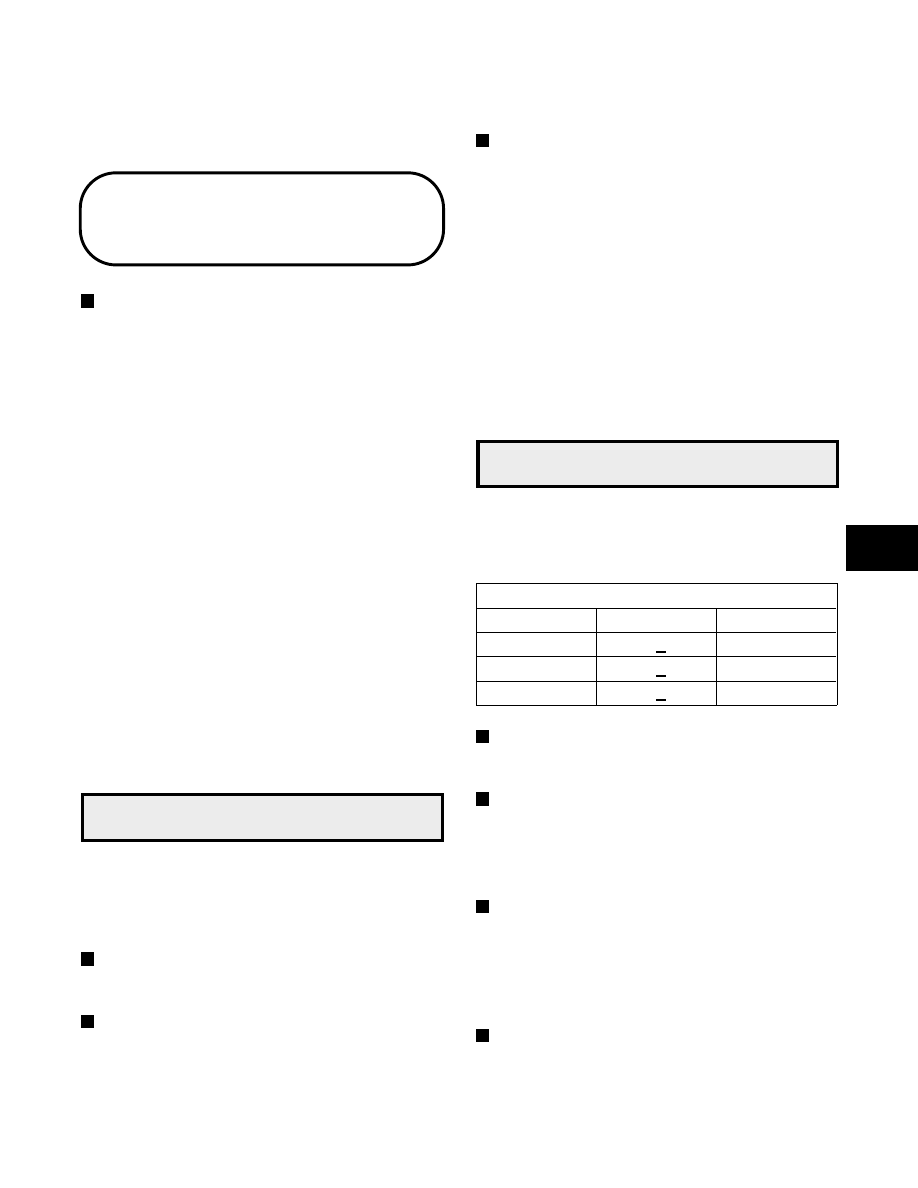Snowmobile Arctic Cat (2000 year). Instruction - part 58

If there were any such intermittent problems, the
problem area will be shown on the display. Check the
indicated area for a wire connection problem or loose or
corroded connections.
Testing Individual
EFI Components
NOTE: For all of the following tests using the EFI
Analyzer, the analyzer power light must be
illuminated. If not illuminated, the problem must be
corrected before proceeding. Also, the analyzer
must be properly connected to a 12-volt battery.
ENGINE RPM FUNCTION
This test can be used to verify the snowmobile
tachometer or can be used when checking several of the
EFI components. When checking the RPM, use the
following procedure.
1. Place the rear of the snowmobile on a safety stand.
2. Start the engine.
3. Connect the analyzer harness (analyzer OFF) to the
diagnosis test plug. Connect the external leads of
the harness to a good 12-volt battery.
4. Switch the analyzer ON.
5. With the analyzer power light illuminated and using
an analyzer with the new updated EPROM chip,
select KOKUSAN by pressing the MENU
SELECT buttons until KOKUSAN appears on the
display; then press the TEST button. Press the
MENU SELECT buttons repeatedly until Engine
RPM appears on the display.
Engine RPM
6. Press the TEST button. Actual engine RPM should
now be indicated. Slowly compress the throttle
lever and the display should indicate the increased
engine RPM.
NOTE: The test harness must be connected to the
ECU after the engine has been started. If connected
prior, the engine may be very difficult to start.
NOTE: If proceeding to another test, first press
the TEST button once again to cancel the present
test. To select a different test function, use the
MENU SELECT buttons.
IGNITION TIMING TEST FUNCTION
(Engine Running)
NOTE: When using an analyzer which has been
updated with the new EPROM chip, first select
KOKUSAN by pressing the TEST button. This will
allow the testing of the batteryless EFI system.
1. Place the rear of the snowmobile on a safety stand.
2. Start the engine.
3. Connect the analyzer harness (analyzer OFF) to the
diagnosis test plug. Connect the external leads of
the harness to a good 12-volt battery.
4. Switch the analyzer ON.
5. With the analyzer power light illuminated, press the
MENU SELECT buttons repeatedly until the words
Ignition Timing appear on the display.
Ignition Timing
6. Press the TEST button; then increase the engine
RPM to the specification given. Actual engine timing
in degrees will now appear on the display.
Timing Specifications
Model
Degrees
@ RPM
500 EFI
24 + 2
3500
580 EFI
30 + 2
4000
600 EFI
20 + 2
5000
NOTE: The test harness must be connected to the
ECU after the engine has been started. If connected
prior, the engine may be very difficult to start.
NOTE: Ignition timing remains the same on either
a hot or cold EFI engine. Always verify timing at
4000 RPM using a timing light. Timing is not
adjustable. If timing is off by more than 2°, the
problem may be either the ignition timing sensor or
the CDI unit.
NOTE: If proceeding to another test, first press
the TEST button once again to cancel the present
test. To select a different test function, use the
MENU SELECT buttons.
EXISTING PROBLEM DIAGNOSIS
TEST (ENGINE OFF) FUNCTION
NOTE: When using an analyzer which has been
updated with the new EPROM chip, first select
KOKUSAN by pressing the TEST button. This will
allow the testing of the batteryless EFI system.
4
4-51